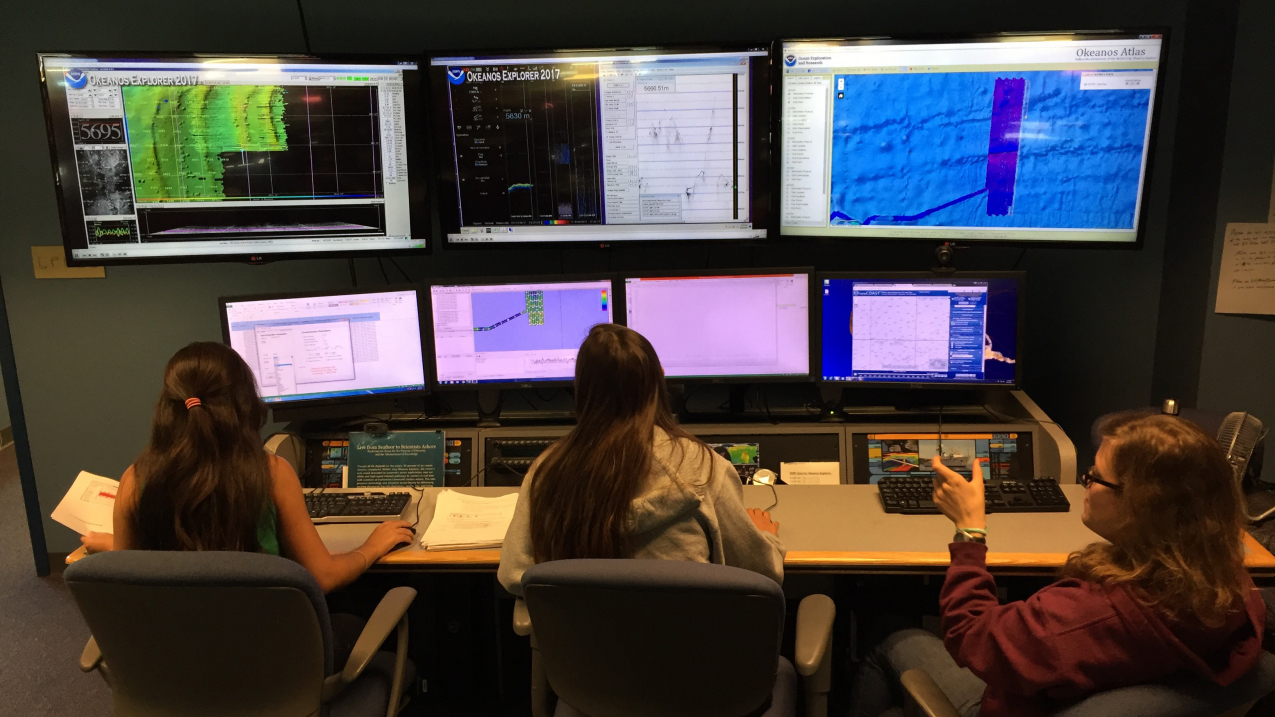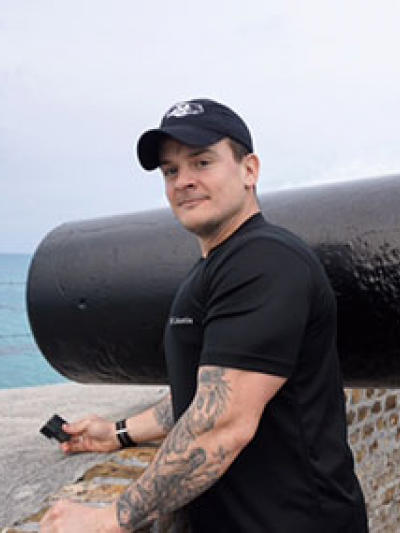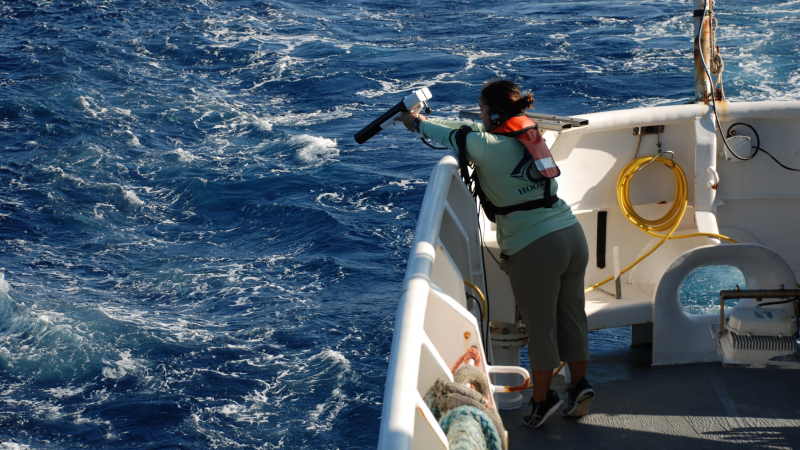Hundreds of miles east of Florida, on a ship in the middle of the North Atlantic Ocean, Ryan Marr squinted at his computer as sonar data streamed in. A master’s student in maritime history at East Carolina University, Marr typically used sonar as a tool to locate shipwrecks and other underwater areas of potential ethnographic interest. This time, though, he was learning how to use sonar to map a key deepwater area southeast of Bermuda.

Standing Watch: Explorers-in-Training Laura Almodovar, Victoria Dickey, and Kelsey Lane standing mapping watch at the University of New Hampshire Center for Coastal and Ocean Mapping/Joint Hydrographic Center. (Image credit: Courtesy of the Center for Coastal and Ocean Mapping)
Marr was one of the 10 budding ocean explorers who participated in the Explorers-in-Training (EiT) program this year. This program — run through the NOAA Office of Exploration and Research in partnership with the University Corporation for Atmospheric Research — provides undergraduate and graduate students with the rare opportunity to get hands-on training in ocean mapping from shore and aboard the NOAA Ship Okeanos Explorer.

While students learn science most effectively when given the opportunity to practice it hands-on, few aspiring ocean explorers have access to the large, expensive equipment needed to practice ocean mapping. Marr cited this as one of his main motivations for joining the EiT program.
“The EiT program not only provided training on equipment normally [not accessible in] graduate programs but also gave me the chance to begin to start the conversation with others who work within the oceanic realm,” Marr explained.
Marr and his fellow 2018 Explorers-in-Training got the unique opportunity to use this equipment as full members of a NOAA ocean exploration team, learning how to collect and analyze complex sonar data.
All students in the EiT program participated in 20- to 30-day mapping cruises — either virtually, in person, or both. Those participating virtually each stood their own eight hour watches via telepresence technology, processing sonar data live from the Okeanos Explorer at their home base at the University of New Hampshire’s Center for Coastal and Ocean Mapping/Joint Hydrographic Center.

Ship-bound EiTs like Marr had the chance to join the expedition team aboard the Okeanos Explorer. While at sea, these students gained the full experience of an ocean exploration expedition, from learning how to live aboard a ship to navigating the challenges of at-sea data collection. Each trainee also completed a project of their own interest, with support from experienced mapping professionals on board.
Whether at sea or on shore, the EiT program helps to lay down the first stepping stone to a career path in marine exploration for undergraduate and graduate students. Over the years, many of the 122 past EiTs have converted their mapping skills into careers as hydrographers, marine archaeologists, and marine resource managers both at NOAA and in the private sector. Others have used their new skills to pursue or enhance their graduate school research in marine science, geography, and ocean engineering.
As for Marr, his experience as an EiT this year solidified his aspiration to return to NOAA. “After completing my master’s degree at East Carolina University, I hope to join the NOAA Corps and continue my service in uniform by assisting those carrying out the research critical to our survivability,” he said. NOAA hopes to see Marr and many more exceptional young explorers join our ranks in the future.
This story was originally published in the Fiscal Year 2018 NOAA Education Accomplishments Report.



